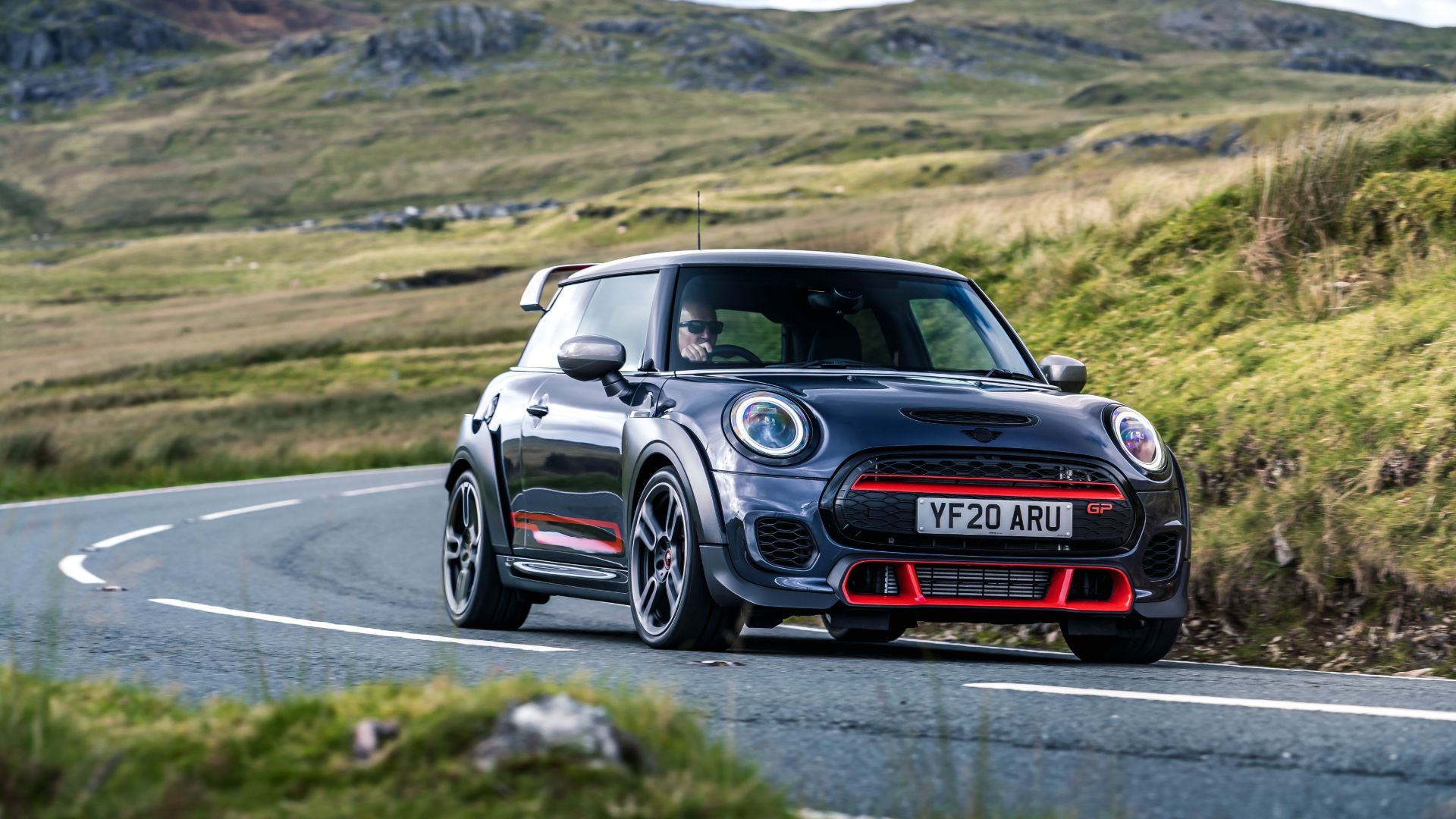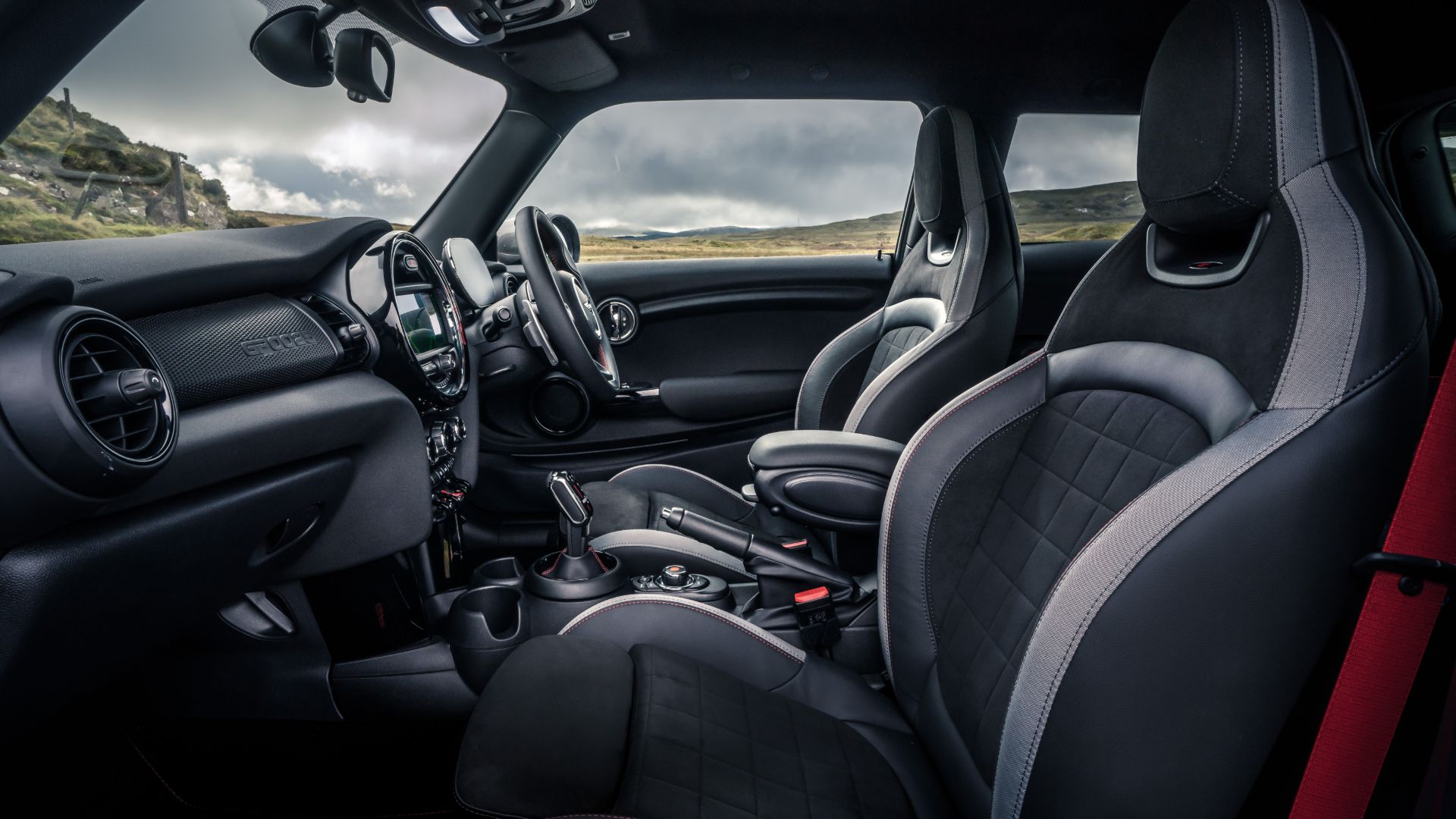
I clamp my legs tight together and cling on. The bull lurches and spins as a frenzied rodeo stomp blares from the speakers. After what seems like minutes – probably 20 seconds, in truth – I’m unceremoniously hurled to the floor. “Ready to go again?” grins the cowboy at the controls. “Er…maybe later.”
In hindsight, riding a plastic Bucking Bronco at a friend’s wedding felt oddly like driving the Mini John Cooper Works GP. Both are fun in small doses. Both left me exhilarated and exhausted. But thankfully, only the former chafed my inner thighs.
Moving swiftly on… meet the fastest production Mini ever. With a 2.0-litre turbocharged engine and eight-speed automatic gearbox (more on that shortly), it serves up 306hp, 0-62mph in 5.2 seconds and 164mph. It’s also 85kg lighter than a standard Mini JCW.
Three thousand will be made, including 575 cars for the UK – all painted Thunder Grey. Joining this club costs £33,895.
Spare parts for a stealth fighter

Like the mutant spawn of a Mini and Honda Civic Type R, the GP3 (as it’s informally known) looks outrageously OTT.
Its wheelarch extensions are unlike anything I’ve seen on a road car. Unpainted blades of carbon fibre-reinforced plastic (CFRP), they could be spare parts for a stealth fighter. The front pair are tattooed with each car’s individual number, from 0001 to 3000 (mine was 0085).
Look closer and you’ll spot the GP3’s 10mm lower suspension, 40mm wider track and 18-inch forged alloy wheels. Nonetheless, the XXL hooped rear spoiler steals the show. Lined in go-faster Chili Red and jutting out either side of the roof, it’s part Touring Car, part Wacky Races.
Leave the kids at home

Inside, there’s that ‘0085’ build number again, this time 3D-printed on the dashboard. Other niceties include big-bolstered seats, a chunky steering wheel with a motorsport centre marker and a fully digital instrument display.
Like the GP Minis of the past, the rear seats are binned to save weight, their place taken by a chassis-stiffening strut brace. Buyers can also go without air conditioning or infotainment, but only a few masochists will.
Prod the red engine-start toggle and click the chunky metal paddle (also 3D-printed). A belligerent growl from the shotgun-style tailpipes is amplified by the echo chamber behind your ears.
With peak torque of 332lb ft from 1,750rpm, the ‘B48’ engine – shared with the BMW M135i – feels gutsy from the get-go. Mini’s press pack talks of ‘spontaneous power delivery and unbridled forward thrust’, which is a long-winded way of saying it’s bonkers-quick. There are no drive modes: just aim and fire.
Unfortunately, apply the power in anything other than a dead-straight line and the GP3 flares into wild wheelspin and torque steer. The front tyres seem overwhelmed by the job at hand. On dry but cold roads, it scampered about like a puppy with a fresh roll of Andrex. Even Mountune’s modified 385hp Golf GTI, which I drove earlier this year, managed its steering with more decorum.
The result is a paradox: a car you’re inclined to grab by the scruff, yet one that rewards a smooth and steady approach.
Automatic for the people

The gearbox is an issue, too. I’m not about to climb on my soapbox and demand three pedals and a stick; a quick-fire twin-clutch ’box would work equally well here. Sadly, the GP3 makes do with an old-school torque converter automatic – fine for a lazy luxury saloon, but too slow-witted for a hyperactive hot hatch. It feels like an ill-judged compromise.
I’m sure the GP3 would be a riot on a track. And despite my gripes, it also raises a smile on the road. If you’re a modern Mini aficionado looking for a weekend toy, there’s much to like.
For me, though, it lacks the join-the-dots sense of flow that marks out a great driver’s car. Too often, you feel it’s working against you, trying too hard, struggling to keep up. Like the Bucking Bronco, it was fun while it lasted. But I’ll pass on another go.
ALSO READ: